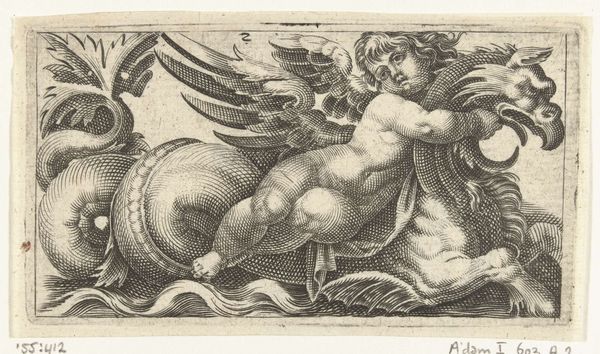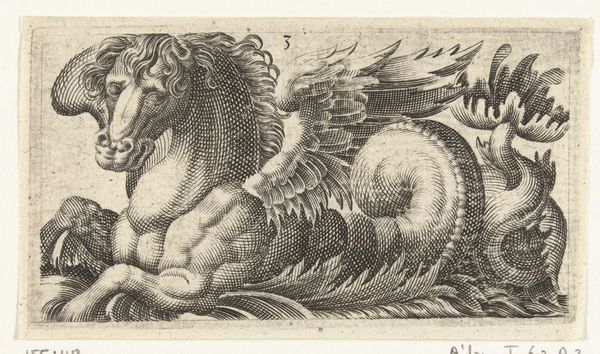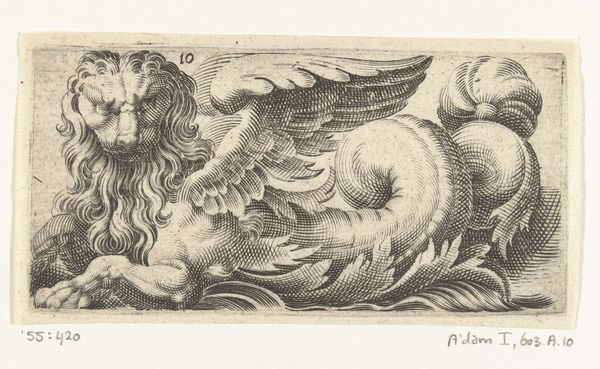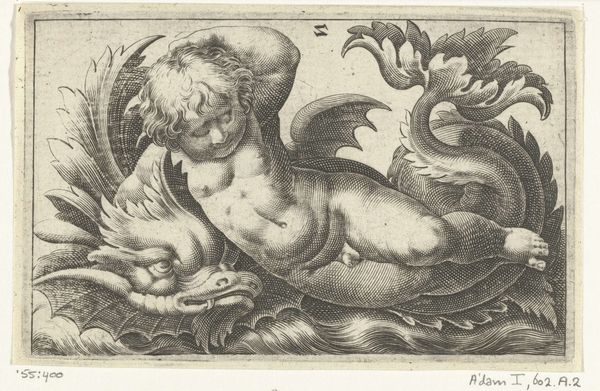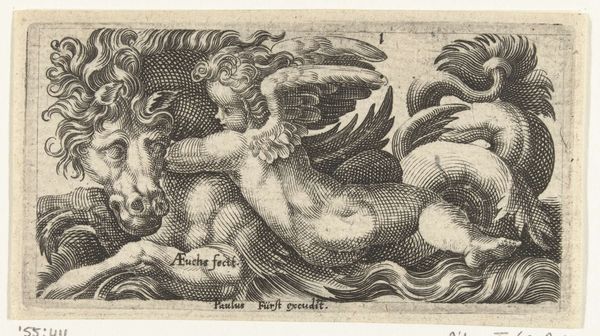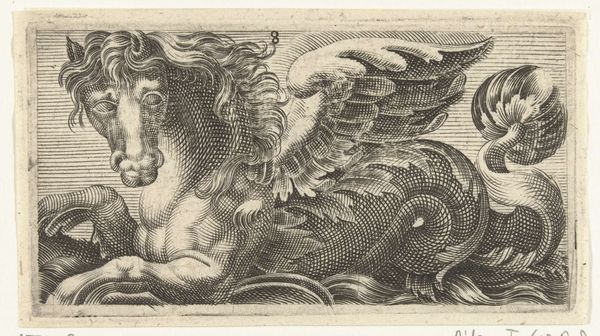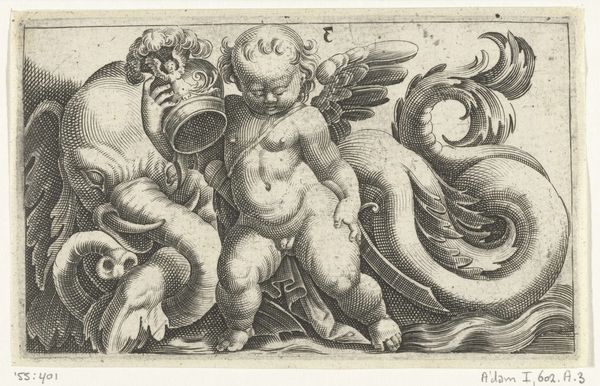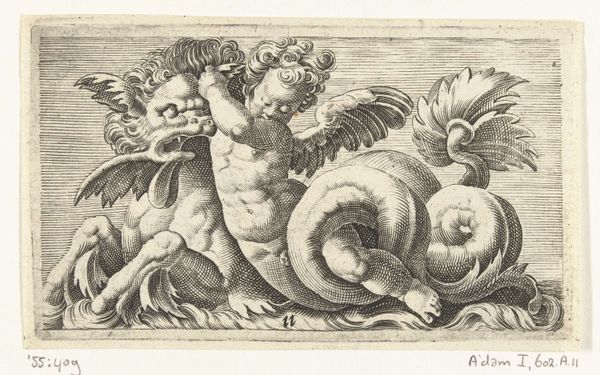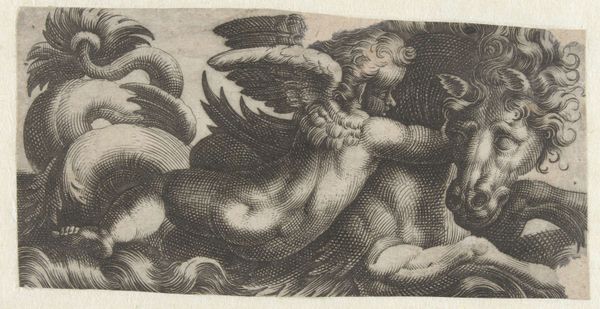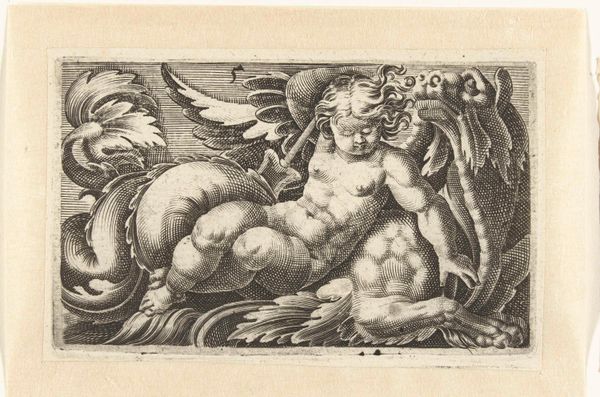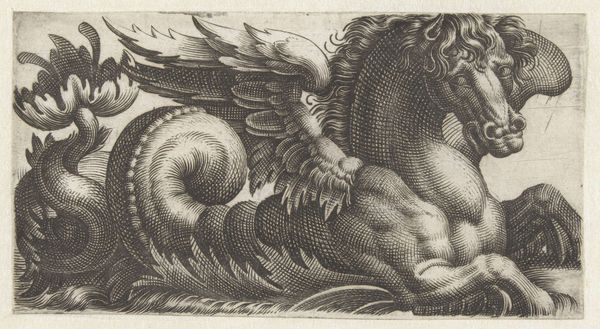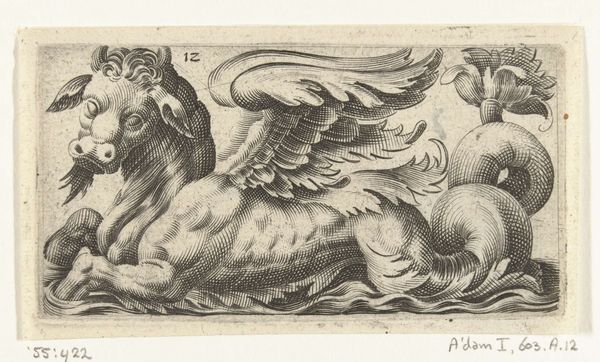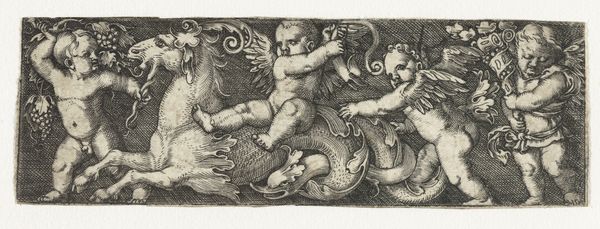
print, engraving
#
portrait
# print
#
mannerism
#
figuration
#
nude
#
engraving
Dimensions: height 53 mm, width 109 mm
Copyright: Rijks Museum: Open Domain
Editor: We're looking at "Sphinx with a Fish Tail," an engraving from the late 16th century, created by Adam Fuchs. The fantastical creature fills the frame, but the way the figure blends human, animal, and mythical features feels really unusual. How do you interpret this work? Curator: This print gives us a glimpse into the visual language of the late Renaissance. What might seem 'unusual' to us reflects a society grappling with humanist ideals, classical mythology, and emerging scientific thought. These hybrid creatures, often seen in Mannerist art, became metaphors for exploring shifting boundaries, between the natural and the artificial. Consider also the blatant eroticisation through the display of the nude figure - who does it cater to and what does it signify? Editor: I never thought of it that way. It makes me think about the male gaze, which may explain this display of nudes. But why the sphinx, though? And the fish tail? Curator: The sphinx, with its riddles and associations with ancient wisdom, speaks to a desire for knowledge and control over nature. But the addition of the fishtail... It disrupts that authority, connecting her to the fluidity and uncontrollability of the sea, but most interestingly suggesting an intersectional element by gendering this creature with femininity, questioning existing hierarchies. Where do you think such art would feature, and what intersectional themes do you feel from the themes expressed? Editor: Thinking about it now, maybe its location in an illustrated book for nobility suggests these powerful and often mythical, narratives help perpetuate particular class and gender structures of society. And thank you so much, looking through a intersectional point-of-view, opens new perspective to understanding these pieces. Curator: Absolutely. Engaging with art through a lens of power, gender, and social context allows us to question, not just appreciate, the past.
Comments
No comments
Be the first to comment and join the conversation on the ultimate creative platform.

